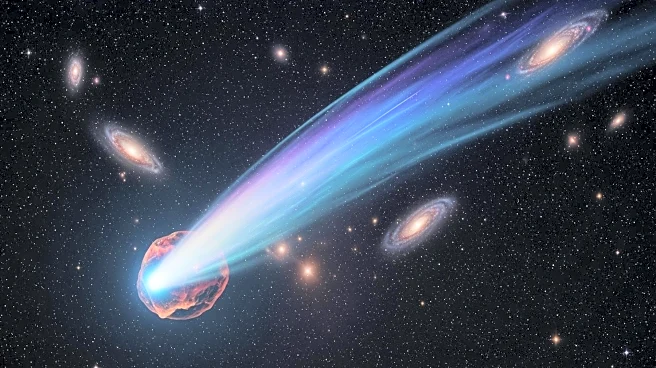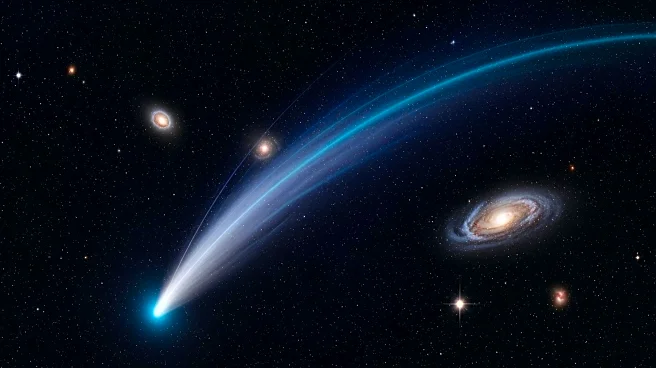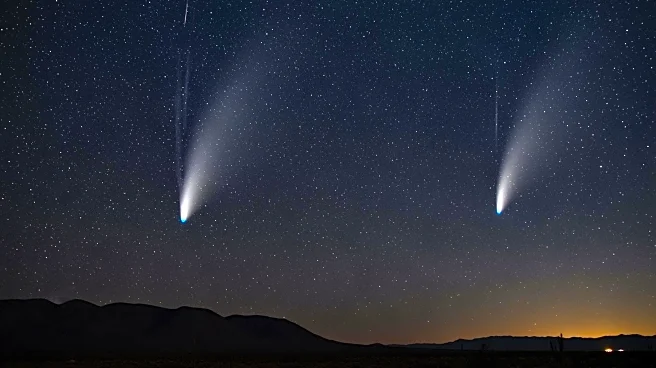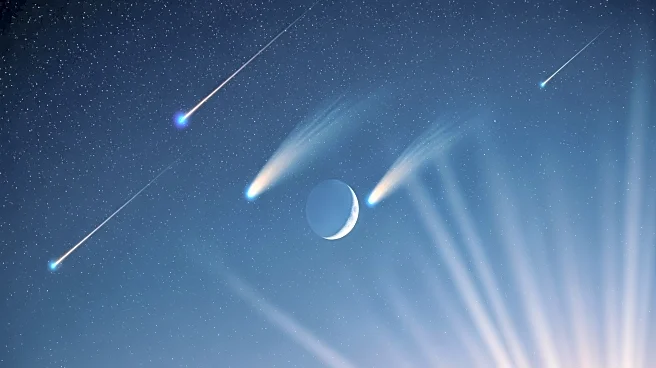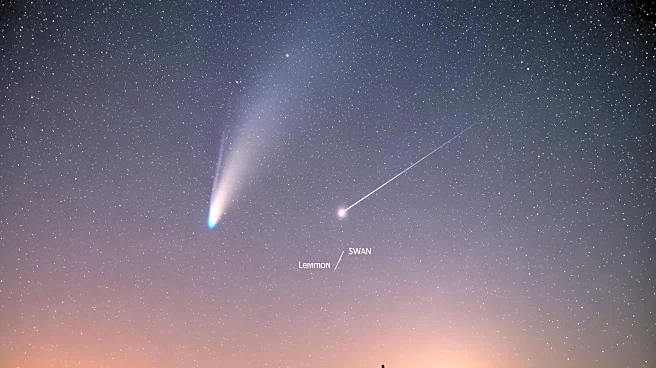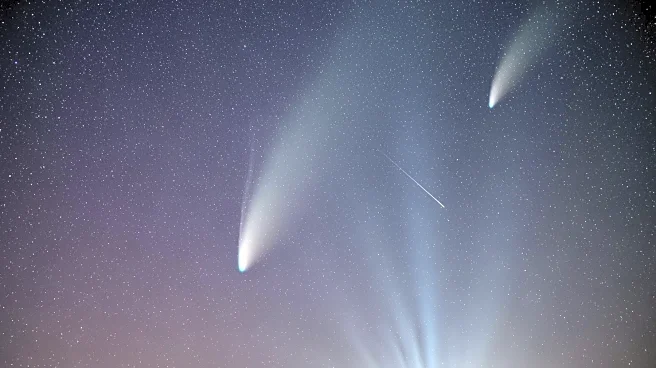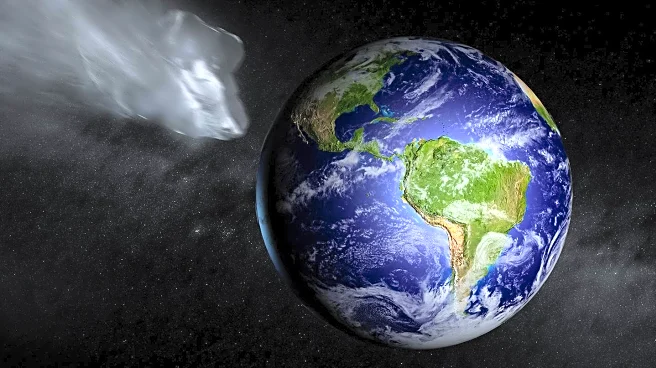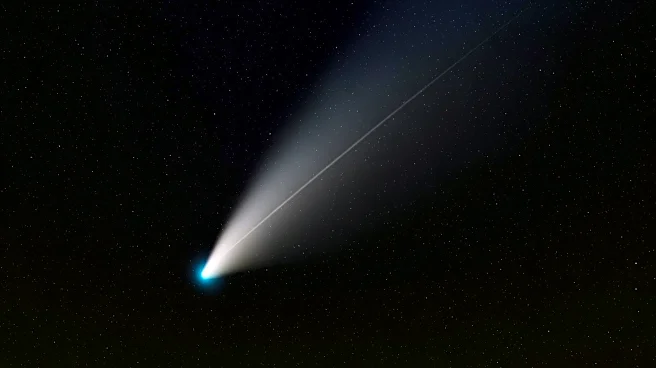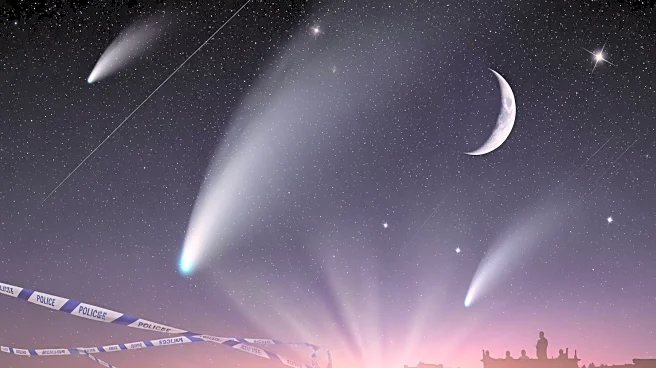What's Happening?
Comet C/2025 A6, known as Comet Lemmon, made its closest approach to Earth on October 21, 2025. This celestial event provides a rare opportunity to view the comet, which will not be visible again until
3175. Discovered at the Mount Lemmon Survey in Tucson, Arizona, Comet Lemmon has a green tint due to solar radiation breaking down carbon molecules. To view the comet, observers should look towards the northwest sky about an hour and a half after sunset, using binoculars or a small telescope for optimal viewing.
Why It's Important?
The visibility of Comet Lemmon is significant for both amateur and professional astronomers, offering a unique chance to study its composition and trajectory. Such events can inspire public interest in space exploration and science, fostering educational initiatives and community engagement. The comet's approach also highlights advancements in astronomical observation techniques and the importance of dark skies for celestial viewing.
What's Next?
As Comet Lemmon continues its journey, astronomers will monitor its path and brightness, contributing to ongoing research in cometary science. Observers are encouraged to take advantage of this rare event before the comet becomes invisible after November 12, 2025. Future celestial events, including meteor showers, will continue to provide opportunities for observation and study.
Beyond the Headlines
The study of comets like Lemmon can provide insights into the early solar system and the formation of celestial bodies. Understanding the chemical composition and behavior of comets contributes to broader scientific knowledge and can inform future space missions.
